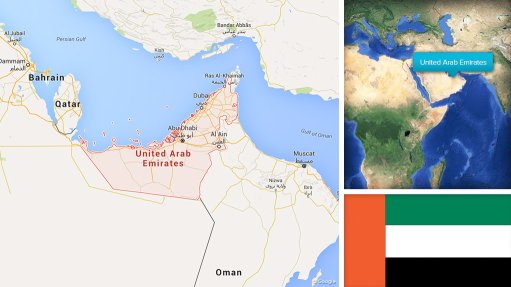Community engagement yields project success




FIXING MISTAKES FROM THE PAST The R2.5-billion MTR operation will address environmental degradation caused by prolific legacy mining activities
OPTIMISED OPERATIONS The Mogale Tailings Retreatment operation was delivered four months ahead of schedule and R300-under budget
LOCAL SUCCESS Pan African Resource’s emphasis on local engagement has been key to the project’s success
The Mogale Tailings Retreatment (MTR) operation of midtier gold producer Pan African Resources (PAR) has significantly curbed illegal mining activities in the vicinity of its operations in the West Rand region of Gauteng, while also addressing long-standing environmental degradation and fostering community upliftment.
The R2.5-billion MTR operation, which reprocesses historic gold tailings deposits, will at the same time address environmental degradation caused by prolific legacy mining activities in the area, and generate economic benefits for the community, a profit for the company and a solution to rehabilitate the vast tailings dumps of the gold-rich region.
On the back of its extensive expertise in undertaking similar projects in Barberton and Evander, PAR optimised construction and operational efficiency, completing the project four months ahead of schedule and saving about R300-million off the original project cost estimate through a hybrid engineering, procurement and construction management (EPCM) model.
In an impoverished area rife with illegal mining, the improved security measures brought by MTR, as well as the reprocessing and consolidation of historic tailings from several dumps into a more modern central tailings storage facility, will help to create safer conditions for nearby communities and foster local economic development, says PAR investor relations head Hethen Hira.
In conversation with Mining Weekly, he explains that illegal mining, which is a persistent issue in many South African mining regions, was a major concern in the area surrounding the MTR project, prior to the miner’s entry.
According to Hira, proactive interventions to address such issues have started to shift the dynamics.
To safeguard the operation, PAR implemented advanced security measures, including the use of drones, thermal imaging technology, traditional barriers such as perimeter walls and a large security personnel complement.
“We know illegal mining cannot be entirely eradicated, but our proactive measures have significantly reduced the threat in this area. By collaborating with police and investing in technology, we’re creating an environment that’s not worth the risk for illegal miners,” he explains.
Further, PAR’s efforts to rehabilitate and shutter abandoned shafts, which illegal miners often use for access into historic underground workings, have also contributed to the decline of illegal mining activities in the area.
“By reprocessing tailings and backfilling old mining voids, we’ve reduced opportunities for illegal mining in the area. The feedback from local communities indicates a tangible improvement in safety, with fewer informal settlements and reduced activity from illegal miners,” highlights Hira.
Community-Centred
PAR’s emphasis on local engagement has been key to the project’s success, emphasises Hira.
The company created up to 1 600 jobs during construction, of which 700 were local hires based on skills availability, and ensured that long-term roles would continue to prioritise local hires.
Skills audits help to identify available skills, and on-the-job training is provided to upskill local labour. This intensive approach to engagement also mitigated initial community resistance to the project, he adds.
“When we first started, there was a lot of misinformation suggesting that the community wouldn’t benefit. Through transparent communication and tangible actions, we’ve shifted that narrative. Community members now report less dust pollution and safer living conditions, while water quality will also improve as contaminants are removed,” states Hira.
PAR also supported small businesses in the region by giving local suppliers priority in procurement, with regular updates done through local media and social platforms, ensuring transparency and strengthened trust with residents.
The MTR operation has also focused on reducing the environmental footprint of mining in the region, with historic tailings deposits being reprocessed in tandem with concurrent rehabilitation of the land, as well as alignment with global standards for tailings management, including consolidating multiple deposits into a single facility with modern features to reduce pollution and improve their legacy going forward.
“The environmental impact of legacy mining is significant, but we’re making strides in improving these areas,” says Hira.
Specifically, PAR’s alien vegetation removal initiative has employed and trained over 60 community members, providing them with accredited skills to establish their own businesses in landscaping and environmental restoration.
PAR also has plans to repurpose rehabilitated land for agriculture and other economic uses, which has already seen success with a blueberry farming project at its Barberton site, which employs hundreds of seasonal workers.
“Mining is not infinite, and it’s our responsibility to plan for the future sustainability of these regions. We’re not just rehabilitating land, we’re creating opportunities for communities to thrive long after the mining stops,” concludes Hira.
Article Enquiry
Email Article
Save Article
Feedback
To advertise email advertising@creamermedia.co.za or click here
Press Office
Announcements
What's On
Subscribe to improve your user experience...
Option 1 (equivalent of R125 a month):
Receive a weekly copy of Creamer Media's Engineering News & Mining Weekly magazine
(print copy for those in South Africa and e-magazine for those outside of South Africa)
Receive daily email newsletters
Access to full search results
Access archive of magazine back copies
Access to Projects in Progress
Access to ONE Research Report of your choice in PDF format
Option 2 (equivalent of R375 a month):
All benefits from Option 1
PLUS
Access to Creamer Media's Research Channel Africa for ALL Research Reports, in PDF format, on various industrial and mining sectors
including Electricity; Water; Energy Transition; Hydrogen; Roads, Rail and Ports; Coal; Gold; Platinum; Battery Metals; etc.
Already a subscriber?
Forgotten your password?
Receive weekly copy of Creamer Media's Engineering News & Mining Weekly magazine (print copy for those in South Africa and e-magazine for those outside of South Africa)
➕
Recieve daily email newsletters
➕
Access to full search results
➕
Access archive of magazine back copies
➕
Access to Projects in Progress
➕
Access to ONE Research Report of your choice in PDF format
RESEARCH CHANNEL AFRICA
R4500 (equivalent of R375 a month)
SUBSCRIBEAll benefits from Option 1
➕
Access to Creamer Media's Research Channel Africa for ALL Research Reports on various industrial and mining sectors, in PDF format, including on:
Electricity
➕
Water
➕
Energy Transition
➕
Hydrogen
➕
Roads, Rail and Ports
➕
Coal
➕
Gold
➕
Platinum
➕
Battery Metals
➕
etc.
Receive all benefits from Option 1 or Option 2 delivered to numerous people at your company
➕
Multiple User names and Passwords for simultaneous log-ins
➕
Intranet integration access to all in your organisation




















